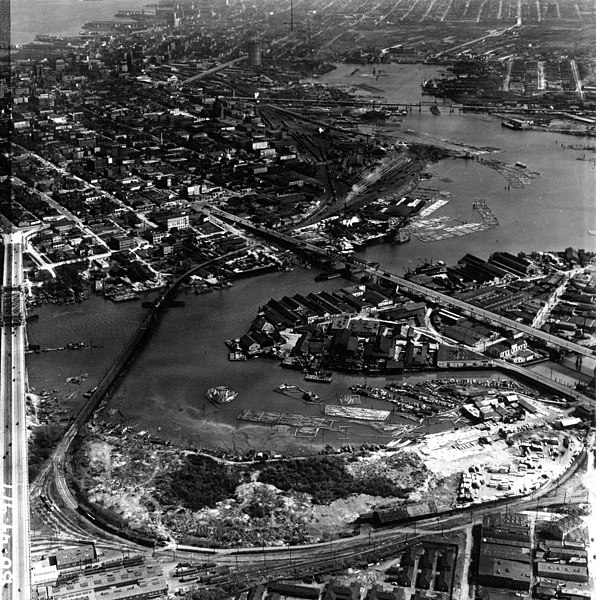The Burrard Street Bridge is a four-lane, Art Deco style, steel truss bridge constructed in 1930–1932 in Vancouver, British Columbia, Canada. The high, five part bridge on four piers spans False Creek, connecting downtown Vancouver with Kitsilano via connections to Burrard Street on both ends. It is one of three bridges crossing False Creek. The other two bridges are the Granville Bridge, three blocks or 0.5 km (0.31 mi) to the southeast, and the Cambie Street Bridge, about 11 blocks or 2 km (1.2 mi) to the east. In addition to the vehicle deck, the Burrard Bridge has 2.6 m wide sidewalks and a dedicated cycling lanes on both sides.
Burrard Bridge
Figurehead sculpture of Sir Harry Burrard-Neale by Charles Marega. Letter 'B' on prow.
Burrard Bridge circa 1932, with original street lamps.
As a tribute to Canadian World War I prisoners of war, who huddled around open fires in their prison camps, John Grant had the idea to install huge lamps at both ends of the span. For placement of the lamps:.
False Creek is a short narrow inlet in the heart of Vancouver, separating the Downtown and West End neighbourhoods from the rest of the city. It is one of the four main bodies of water bordering Vancouver, along with English Bay, Burrard Inlet, and the Fraser River. Granville Island is located within the inlet.
False Creek from the air
False Creek between Granville Street Bridge and Burrard Street Bridge
Aerial view, 1947. Granville Island at centre-right.
Panorama of False Creek, left to right: Downtown Vancouver, BC Place, Plaza of Nations (since demolished), and Science World








